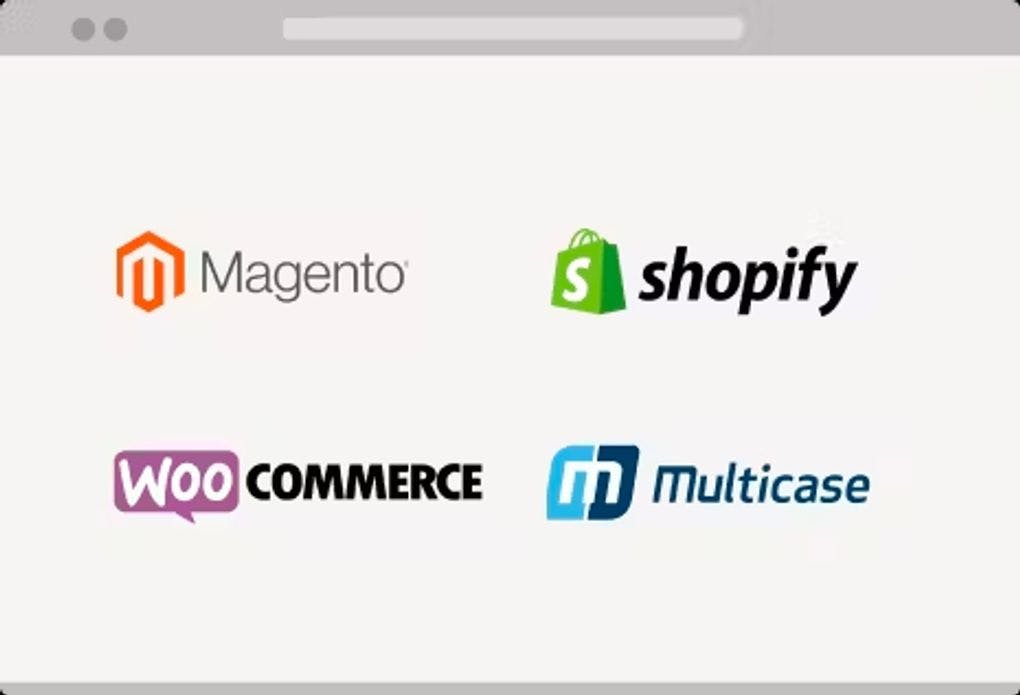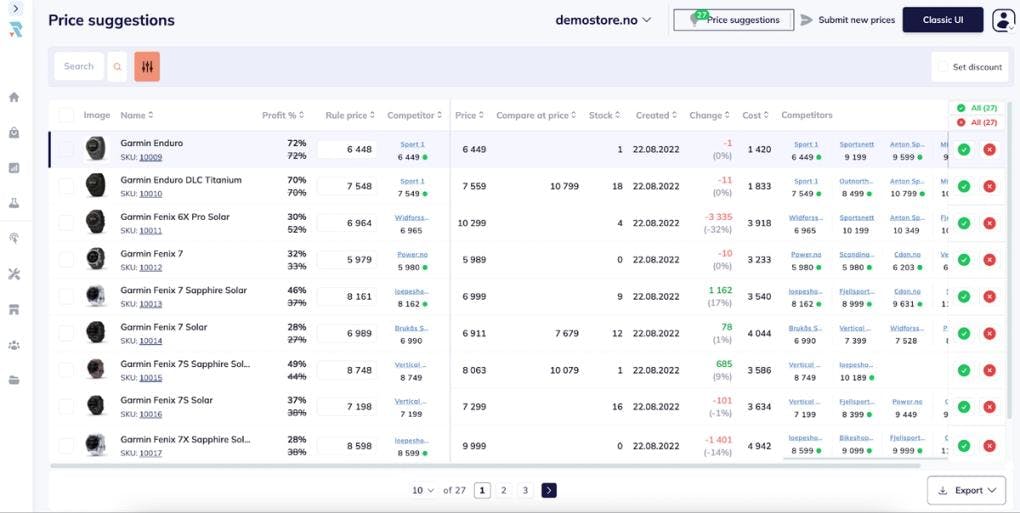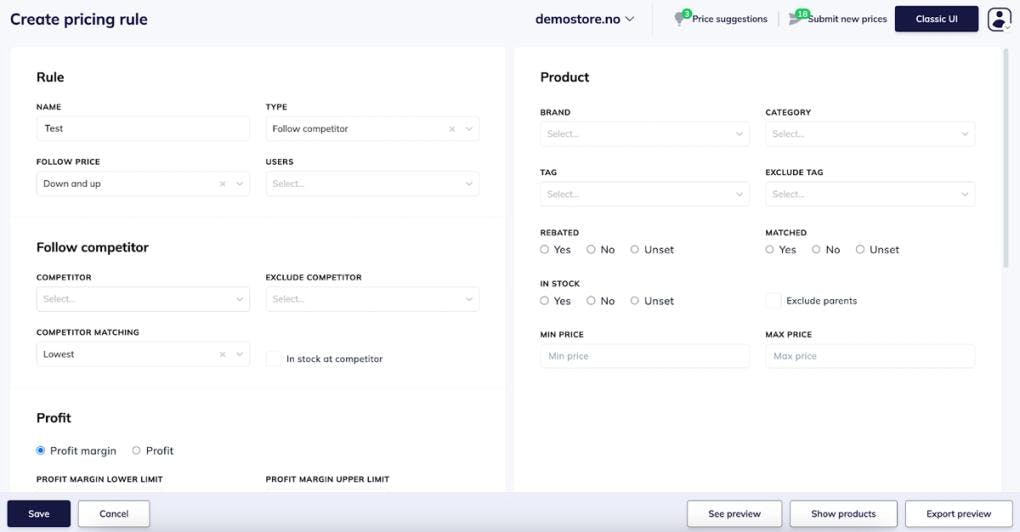6 Integrations You Need To Supercharge Your Pricing Strategy Today
January 22, 2024 | 10 minutes read
It's a typical busy morning at your e-commerce store. You're juggling tasks like product management, sales analysis, and market trend monitoring, just to name a few.
Suddenly, you notice your competitor has slashed prices overnight. You need to respond quickly, but the thought of manually adjusting prices across multiple platforms is daunting.
This is where the game changes with pricing optimization tools.
These tools aren't just “nice to have”; they're a necessity in today's fast-paced e-commerce environment.
But having a standalone tool isn't enough.
The real power lies in integrating it with your other e-commerce platforms, ensuring a seamless, responsive, and efficient pricing strategy.
In this article, we take a look at why you need to integrate your pricing optimization tolls with other platforms and which integrations Reprice offers.
Table of contents:
- Embracing the future of e-commerce with pricing optimization tools
- How integrations in pricing optimization tools maximize efficiency
- 6 integrations you need to supercharge your pricing strategy today
Embracing the future of e-commerce with pricing optimization tools
In the e-commerce world, success hinges on more than high-quality products and stellar service.
The rise of pricing optimization tools, particularly Reprice, is reshaping how businesses approach pricing.
These kinds of tools enable companies to shift from manual, reactive pricing to proactive, data-informed strategies.
Reprice provides automated and tailored pricing solutions to tackle today's e-commerce challenges. In other words: Enabling quick adaptation to market fluctuations and competitive pricing based on real-time competitor analysis.
It also streamlines the management of pricing across various sales channels, making you more efficient and responsive.
In the next section, we take a look at the benefits of integrating pricing optimization tools like Reprice with different platforms.
How integrations in pricing optimization tools maximize e-commerce efficiency
Creating a more efficient pricing process is crucial if you want to improve profitability, compete more effectively in the market, and provide better value to your customers. And the key to this lies in syncing your pricing tool with your business systems.
This approach not only simplifies pricing management, but also enhances the effectiveness of your pricing strategy with:
- Easy pricing data updates: With integration, data like prices, stock, or promotions are automatically updated everywhere. This eliminates manual work, reduces errors, and saves time.
- Quick market understanding: Connecting with ERP, PIM, and analytics tools, your pricing software gives instant insights into market trends, competition, and customer habits. Quick access to this information allows for fast adjustments in pricing.
- Uniform pricing for customers: Integrating with e-commerce platforms ensures that customers see the same prices across all shopping channels. This consistency is important for customer trust and transparency. Plus, a much more smooth shopping experience, whether online or in-store.
- Smarter pricing choices: By pulling in data from various systems, you can better understand how pricing changes affect sales and profit. This leads to smarter pricing decisions and better business planning.
- Efficient inventory management: Linking with inventory and warehouse systems helps match pricing with stock levels and sales patterns. This results in better stock management, fewer stock issues, and pricing that helps increase sales and profit.
6 integrations you need to supercharge your pricing strategy today
For efficient e-commerce operations, Reprice's integrations are crucial.
They give you seamless data management and dynamic pricing across multiple platforms and systems:
1. Sync with e-commerce platforms
Reprice seamlessly connects with major e-commerce platforms like Magento, Shopify, and WooCommerce.
This two-way integration keeps product data like price, title, EAN, cost, and inventory uniform between your e-commerce site and Reprice.
You'll enjoy smooth product data syncing, including key details.
For example, if you change a product's price on Shopify, it automatically updates in Reprice too, maintaining consistent, current pricing strategies on both platforms.

2. ERP and PIM systems integration
Reprice's integration extends to key systems like Brightpearl (ERP) and Salsify (PIM), streamlining the way you manage pricing and data.
With this connection, any updates to product details or pricing in your ERP or PIM system are automatically mirrored in your e-commerce stores. This ensures that all your platforms are always aligned with the latest information.
The major advantage here is the dual synchronization feature, offering you detailed control over pricing and data accuracy.
Imagine this: A cost price change in your ERP system, like Brightpearl, is instantly updated in Reprice. This quick update allows you to immediately tweak your selling prices, keeping your profit margins exactly where you want them. In other words, making it much easier to streamline your pricing process and be more dynamic with your pricing.

3. Google BigQuery integration
Reprice's integration with Google BigQuery simplifies data management by bringing all your product and competitor data into one central place. This makes it much easier to access and analyze data, helping you spot market trends and gain valuable insights for smart pricing decisions.
The key benefit is having all your product and competitor information in one accessible spot, which also includes storing historical data.
In practical terms, this means a company can use Reprice to delve into years of pricing data stored in BigQuery, uncovering long-term pricing patterns and shaping future pricing strategies based on solid data. We can also push our data into Big Query, so the customers can use Reprice as a data provider without using our user interface (UI).
4. Google analytics integration
Integrating Reprice with Google Analytics unlocks a treasure trove of insights into how your customers respond to your pricing strategies.
This integration is your secret weapon for tracking customer behavior and measuring the effectiveness of your pricing tweaks, all by analyzing how customers interact with your website.
A major advantage of this is the ability to track and analyze the impact of pricing changes through customer responses.
For example, if an e-commerce site rolls out a new discount strategy, integrating with Google Analytics allows them to monitor shifts in customer actions, such as a rise in shopping cart additions, helping you evaluate the success of the pricing changes.
5. API for data access and automation
Reprice's API offers straightforward access to a wide range of product and competitor information. This lets businesses easily pull competitor pricing and stock details, seamlessly integrating them into their own systems.
It's ideal for setting up custom automated workflows and fine-tuning pricing rules without hassle.
The main advantage is the ease of accessing and using detailed data for custom solutions and pricing management.
For example, a company could automate their pricing adjustments based on real-time competitor data, ensuring they stay competitive with minimal manual input.

6. Inventory and warehouse management systems integration
Lastly: Reprice connects with systems like Inventory Planner and Ongoing WMS, granting access to detailed and current inventory data.
This integration is essential for making well-informed pricing decisions and creating smart pricing rules.
The primary benefit? The ability to quickly tap into real-time inventory information, which is key to strategic pricing in today’s day and age.
On a daily basis, this means a company can dynamically change their product prices by using real-time data from their warehouse management system. This includes information on stock levels and how fast items are selling.
For example, an e-commerce retailer might lower the price of a slow-selling item to encourage sales or increase the price of a fast-selling item to maximize profit.

Conclusion
So, for any e-commerce company aiming to stay competitive and efficient, adopting tools like Reprice is a strategic move.
These pricing optimization tools change the way businesses approach pricing. Helping them shift from manual, time-consuming methods to automated, data-driven strategies.
Integrating with different platforms makes it easier for businesses to quickly adjust to market trends and manage prices efficiently across various channels. Reprice becomes an essential pricing tool, providing companies with the flexibility and knowledge they need to succeed.
This isn't just about keeping up; it's about leading the way in a smart, data-centric e-commerce world.
Ready to get started with Reprice?
Robin Frugaard Jørgensen
Chief Commercial Officer at Reprice
Robin Frugaard Jørgensen is Chief Commercial Officer at Reprice. Prior to joining Reprice in January 2023, Robin spent several years working with pricing strategies in B2B & the consumer electronics industry. Connect with Robin on LinkedIn here or book a demo to see how Reprice can solve your e-commerce pricing challenges.
